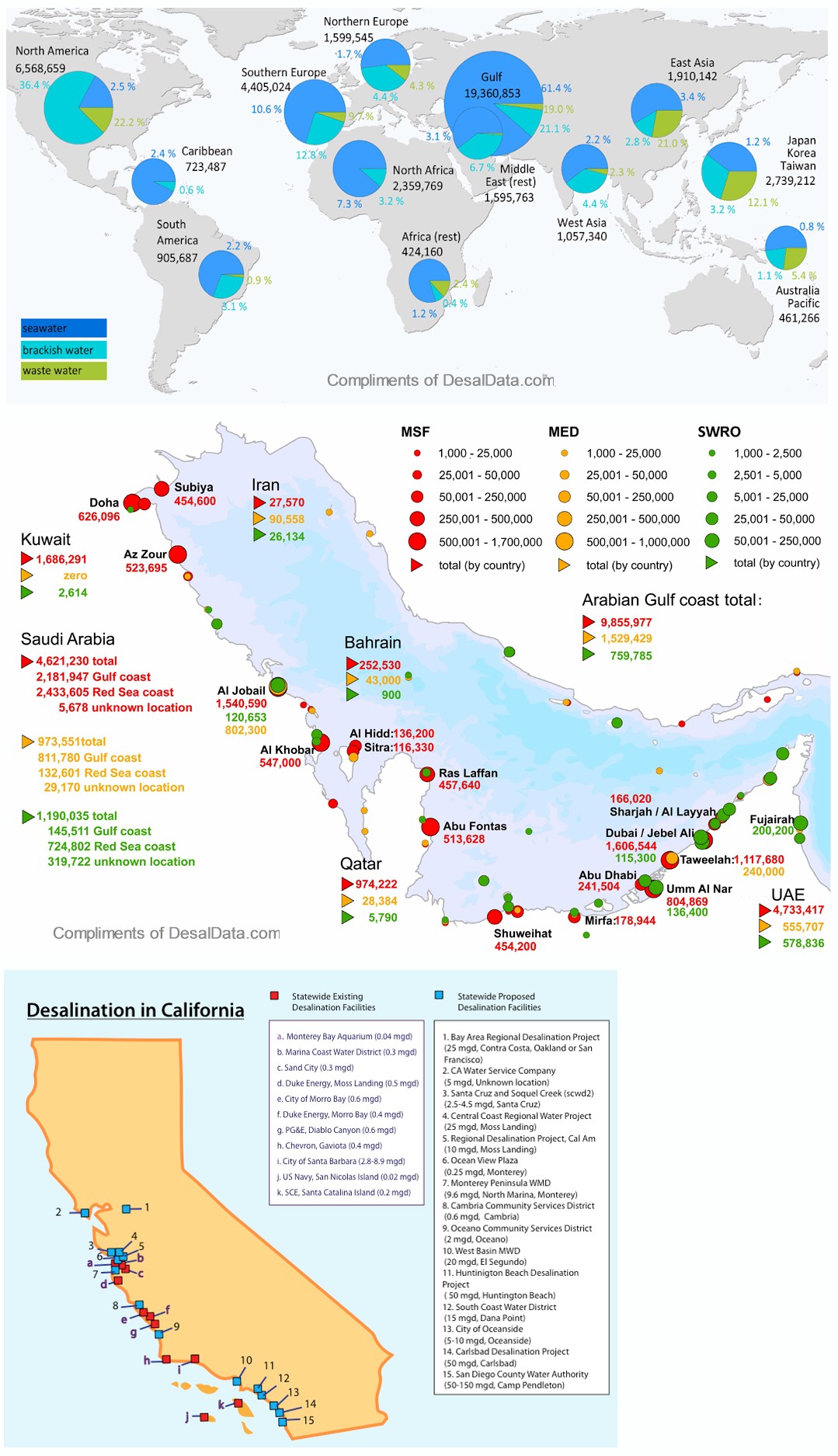
The process of desalination is the removal of salts and other molecules from fresh water molecules. Desalination can apply to a large variety of water types and qualities ranging from inland brackish water desalination to remove low salt levels from fresh ground or surface water to ocean water desalination removing higher salt levels from the ocean or sea. The typical salt content of brackish water is 2,000 to 10,000 mg/l and for seawater over 35,000 mg/l. Drinking water salt levels determined by the World Health Organization (WHO) are set at 500 mg/L. Desalination has been around for many years and has been dated back to Julius Caesar around 49 BCE with the use of clay filters to remove the salt molecules from the ocean water. While the ability to acquire fresh water from salty water has been on-going for centuries, the technology in which the fresh water is extracted from the seawater has improved.
For several countries with dry, arid climates the primary water supply is from ocean water desalination. Israel has long sought solutions to the threat of drought. Commercial desalination began in the 1970s in the city of Eilat, on the Red Sea. The first desalination technology used there, in a short-lived pilot project, froze water to remove the salt, and then melted it to make fresh water. Israel seriously embraced desalination in the late 1990s, after a particularly bad drought. The government decided to build five plants along the Mediterranean. Between those five facilities more than one-quarter of Israel's fresh water is now provided by desalination. Today, about 60 percent of the world’s desalination capacity is located on the Arabian Peninsula.
The United States' first known experience with desalination was in 1791 when Thomas Jefferson had a simple distillation process printed on the backs of all papers distributed on ships, giving sailors an option to produce drinking water in case of emergency. It wasn’t until the late 1940s when researchers began examining ways in which pure water could be extracted from salty water for general day to day uses. During the Kennedy administration, saline water conversion was a high priority technology goal-“go to the moon and make the desert bloom” was the slogan. John F. Kennedy was quoted in 1962 saying “if we could produce fresh water from salt water at a low cost, that would indeed be a great service to humanity, and would dwarf any other scientific accomplishment.”
The first desalination plant built in the U.S. occurred in the 1960’s at Guantanamo Bay, Cuba. When water supplies to the naval base were cut off in retaliation for the Cuban Missile Crisis, the base became self-sufficient, desalinating 3.4 million gallons of water every day. While necessary in the Cuban application, the water itself was not economically efficient to develop large scale desalination facilities to augment surface water sources at the time. Over the course of the next 30 years advancements in the treatment process and technology have resulted in reduced energy and operation costs making ocean desalination a more economically viable option for communities. Today, cruise ships and submarines desalinate ocean-water to meet the needs of their passengers, but less than 1% of the U.S. population on land currently receives desalinated water to drink. Ocean-water desalination has been in practice in the U.S. for hundreds of years, though, and as the technology continues to improve, it is becoming easier and more affordable to produce desalinated ocean-water for everyday human uses.
 @2015 West Basin Municipal Water District
@2015 West Basin Municipal Water District